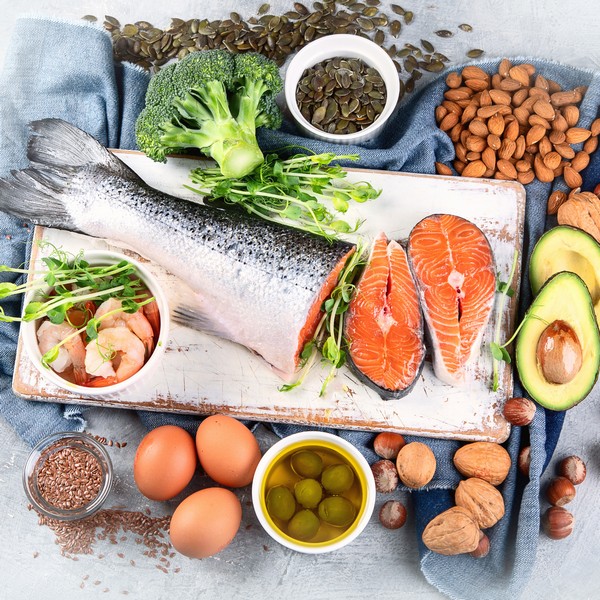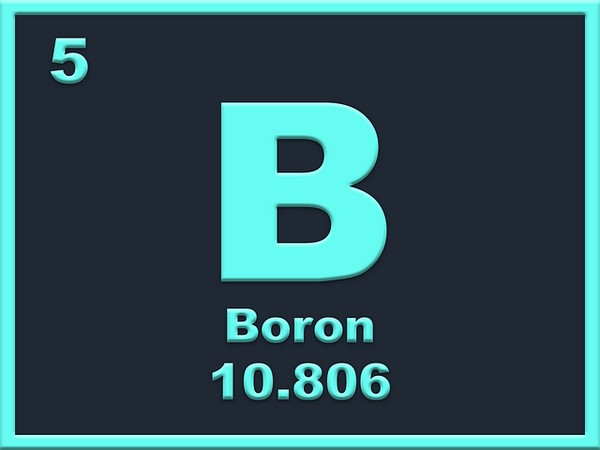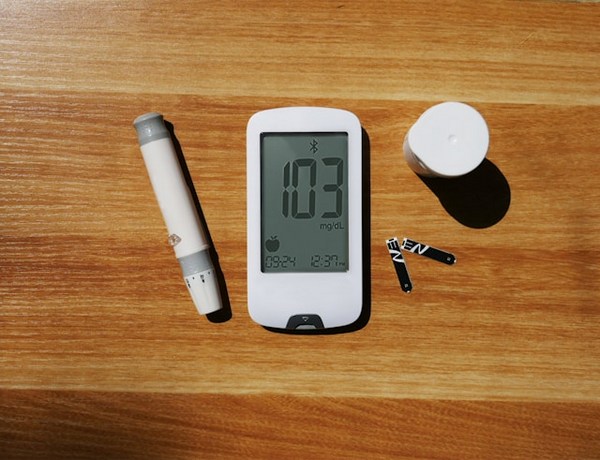Key Takeaways
- Protein is needed for building and repairing body tissues.
- It supports muscle growth, immune function, and hormone production.
- Bioavailable sources of protein include red meat, eggs, and seafood.
- Eating enough protein promotes fullness and supports a healthy metabolism.
- Protein needs vary based on age, activity level, and health goals.
What is Protein?
Protein is one of the essential macronutrients, made up of amino acids that are necessary for the body’s structure and function. It is involved in building tissues, repairing cells, and producing enzymes and hormones.
Amino acids are the building blocks of protein. The body can produce some amino acids, but others, known as essential amino acids, must come from food.
High-quality sources of protein provide all the essential amino acids in the right amounts.
Functions of Protein

Muscle Growth and Repair
Protein is key for building and repairing muscles, especially after exercise. It supports recovery and helps maintain muscle strength.
Immune System Support
Protein is involved in the production of antibodies that fight off infections. A healthy immune system relies on adequate protein intake.
Hormone and Enzyme Production
Many hormones and enzymes in the body are made from protein. These molecules control the most important processes, including metabolism and digestion.
Energy Source
When needed, the body can use protein as a source of energy, though it primarily relies on fat and carbohydrates.
Types of Protein Sources

Bioavailability and Nutritional Density
Animal-based foods are the most bioavailable sources of protein, meaning the body can easily absorb and use the nutrients.
Grass-fed red meat, eggs, and wild-caught seafood are among the most nutrient-dense options.
Animal proteins offer all essential amino acids in one serving, making them highly efficient for meeting the body’s protein needs. They also provide additional nutrients like iron, zinc, and vitamin B12.
Protein Requirements
Daily Recommended Intake
Protein needs vary, but the popular recommended allowance is 0.8 grams of protein per kilogram of body weight. Higher amounts may be beneficial for active individuals or those looking to maintain or build muscle.
Dr. Gabrielle Lyon is a board certified family medicine doctor who focuses on muscle health and aging. She recommends eating about 1 gram of protein per pound of ideal body weight each day. This helps maintain muscle and supports overall health.
Factors Influencing Protein Needs
Factors like age, physical activity, and specific health goals affect how much protein a person needs.
Athletes or those recovering from illness may require more to support tissue repair and recovery.
Signs of Protein Deficiency
Protein deficiency leads to stunted growth, weak muscles, and fatigue. It impairs cognitive development in children and can cause learning difficulties.
The immune system weakens, increasing the risk of infections and illness. Heart problems, high blood pressure, and fluid retention (like swollen legs or abdomen) may develop.
The body struggles to absorb and transport nutrients, worsening other deficiencies, such as vitamin A, iron, and zinc. Anemia, low energy, and pale skin are common symptoms.
Hair becomes brittle, with hair loss and early graying. Emotional issues like anxiety, depression, and irritability often appear.
In severe cases, fertility drops, and pregnancy complications occur. Without enough protein, these issues can become life-threatening, especially in infants and people with chronic illnesses.
Benefits of Adequate Protein Intake
Bone Health
Higher protein intake above the recommended daily allowance (RDA) may help prevent bone loss and reduce the risk of hip fractures.
Older adults in particular may benefit from better bone mineral density and reduced hip fracture risk.
Muscle Maintenance and Growth
Consuming enough protein helps maintain muscle mass and supports muscle growth, especially when combined with strength training.
Enhanced Metabolism and Fat Loss
Protein boosts metabolism by increasing the energy used to digest and process food. It also helps preserve muscle mass during weight loss.
Improved Satiety and Reduced Cravings
Protein makes you feel fuller for longer, which can help reduce cravings and prevent overeating.
Best Practices for Consuming Protein

Spacing Protein Intake Throughout the Day
For optimal muscle repair and growth, it’s helpful to distribute protein intake evenly across meals rather than consuming it all at once.
Prioritizing High-Quality, Nutrient-Dense Protein Sources
Choose nutrient-dense protein sources like grass-fed red meat, pasture-raised eggs, and wild-caught fish to maximize nutrition and support overall health.
Adjusting Protein Intake Based on Physical Activity
More active individuals may need to increase protein intake to support muscle recovery and energy needs.
FAQs
How much protein do I need each day?
The recommended amount varies by individual but typically ranges from 0.8 to 1.2 grams per kilogram of body weight, depending on activity level and goals.
Are animal-based proteins better than plant-based proteins?
Animal-based proteins are more bioavailable, meaning the body absorbs and uses them more efficiently. They also provide all essential amino acids in one serving.
Can too much protein be harmful?
For most people, consuming protein within a reasonable range is safe. Very high intakes over a prolonged period may need to be monitored, especially for individuals with major kidney issues.
What are bioavailable protein sources?
Bioavailable protein sources include grass-fed red meat, pasture-raised eggs, and wild-caught seafood. These provide the body with all essential amino acids and are easily absorbed.
How can I increase my protein intake without supplements?
You can increase your intake by eating more nutrient-dense animal foods like beef, lamb, eggs, and fish. Adding these foods to each meal can help you meet your protein needs naturally.
Research
Crews EL, Fuge, K., Oscai, L., Holloszy, J. and Shank, R., 1969. Weight, food intake, and body composition: effects of exercise and of protein deficiency. American Journal of Physiology-Legacy Content, [online] 216(2), pp.359–363. https://doi.org/10.1152/ajplegacy.1969.216.2.359.
Cuenca-Sánchez, M., Navas-Carrillo, D. and Orenes-Piñero, E., 2015. Controversies Surrounding High-Protein Diet Intake: Satiating Effect and Kidney and Bone Health. Advances in Nutrition, [online] 6(3), pp.260–266. https://doi.org/10.3945/an.114.007716.
Darling, A. L., Millward, D. J., Torgerson, D. J., Hewitt, C. E., & Lanham-New, S. A. (2009). Dietary protein and bone health: A systematic review and meta-analysis. The American Journal of Clinical Nutrition, 90(6), 1674-1692. https://doi.org/10.3945/ajcn.2009.27799
Dhillon, J., Craig, B. A., Leidy, H. J., Amankwaah, A. F., Osei-Boadi Anguah, K., Jacobs, A., Jones, B. L., Jones, J. B., Keeler, C. L., Keller, C. E., McCrory, M. A., Rivera, R. L., Slebodnik, M., Mattes, R. D., & Tucker, R. M. (2016). The Effects of Increased Protein Intake on Fullness: A Meta-Analysis and Its Limitations. Journal of the Academy of Nutrition and Dietetics, 116(6), 968-983. https://doi.org/10.1016/j.jand.2016.01.003
Edozien, J.C., Khan, M.A.R. and Waslien, C.I., 1976. Human Protein Deficiency: Results of a Nigerian Village Study. The Journal of Nutrition, [online] 106(3), pp.312–328. https://doi.org/10.1093/jn/106.3.312.
Fürst, P. and Stehle, P., 2004. What Are the Essential Elements Needed for the Determination of Amino Acid Requirements in Humans? The Journal of Nutrition, [online] 134(6), pp.1558S-1565S. https://doi.org/10.1093/jn/134.6.1558s.
Groenendijk, I., den Boeft, L., van Loon, L.J.C. and de Groot, L.C.P.G.M., 2019. High Versus low Dietary Protein Intake and Bone Health in Older Adults: a Systematic Review and Meta-Analysis. Computational and Structural Biotechnology Journal, [online] 17, pp.1101–1112. https://doi.org/10.1016/j.csbj.2019.07.005.
Henley, E.C., Taylor, J.R.N. and Obukosia, S.D., 2010. The Importance of Dietary Protein in Human Health. Advances in Food and Nutrition Research, [online] pp.21–52. https://doi.org/10.1016/s1043-4526(10)60002-2.
Hou, Y. and Wu, G., 2018. Nutritionally Essential Amino Acids. Advances in Nutrition, [online] 9(6), pp.849–851. https://doi.org/10.1093/advances/nmy054.
Hudson, J.L., Wang, Y., Bergia III, R.E. and Campbell, W.W., 2020. Protein Intake Greater than the RDA Differentially Influences Whole-Body Lean Mass Responses to Purposeful Catabolic and Anabolic Stressors: A Systematic Review and Meta-analysis. Advances in Nutrition, [online] 11(3), pp.548–558. https://doi.org/10.1093/advances/nmz106.
Lopez MJ, Mohiuddin SS. Biochemistry, Essential Amino Acids. [Updated 2024 Apr 30]. In: StatPearls [Internet]. Treasure Island (FL): StatPearls Publishing; 2024 Jan-. Available from: https://www.ncbi.nlm.nih.gov/books/NBK557845/?report=classic
Lourenco, R. and Camilo, M.E., 2002. Taurine: a conditionally essential amino acid in humans? An overview in health and disease. Nutr Hosp, 17(6), pp.262-270.
Morton, R.W., Murphy, K.T., McKellar, S.R., Schoenfeld, B.J., Henselmans, M., Helms, E., Aragon, A.A., Devries, M.C., Banfield, L., Krieger, J.W. and Phillips, S.M., 2017. A systematic review, meta-analysis and meta-regression of the effect of protein supplementation on resistance training-induced gains in muscle mass and strength in healthy adults. British Journal of Sports Medicine, [online] 52(6), pp.376–384.
https://doi.org/10.1136/bjsports-2017-097608.
Nunes, E. A., Colenso-Semple, L., McKellar, S. R., Yau, T., Ali, M. U., Fitzpatrick-Lewis, D., Sherifali, D., Gaudichon, C., Tomé, D., Atherton, P. J., Robles, M. C., Naranjo-Modad, S., Braun, M., Landi, F., & Phillips, S. M. (2022). Systematic review and meta-analysis of protein intake to support muscle mass and function in healthy adults. Journal of Cachexia, Sarcopenia and Muscle, 13(2), 795-810. https://doi.org/10.1002/jcsm.12922
Phillips, S.M., Chevalier, S. and Leidy, H.J., 2016. Protein “requirements” beyond the RDA: implications for optimizing health. Applied Physiology, Nutrition, and Metabolism, [online] 41(5), pp.565–572.
https://doi.org/10.1139/apnm-2015-0550.
Rebholz, C. M., Friedman, E. E., Powers, L. J., Arroyave, W. D., He, J., & Kelly, T. N. (2012). Dietary Protein Intake and Blood Pressure: A Meta-Analysis of Randomized Controlled Trials. American Journal of Epidemiology, 176(suppl_7), S27-S43. https://doi.org/10.1093/aje/kws245
Shams-White, M. M., Chung, M., Du, M., Fu, Z., Insogna, K. L., Karlsen, M. C., LeBoff, M. S., Shapses, S. A., Sackey, J., Wallace, T. C., & Weaver, C. M. (2017). Dietary protein and bone health: A systematic review and meta-analysis from the National Osteoporosis Foundation,. The American Journal of Clinical Nutrition, 105(6), 1528-1543. https://doi.org/10.3945/ajcn.116.145110
Santesso, N., Akl, E.A., Bianchi, M., Mente, A., Mustafa, R., Heels-Ansdell, D. and Schünemann, H.J., 2012. Effects of higher- versus lower-protein diets on health outcomes: a systematic review and meta-analysis. European Journal of Clinical Nutrition, [online] 66(7), pp.780–788. https://doi.org/10.1038/ejcn.2012.37.
Sukhatme, P.V. and Margen, S., 1978. Models for protein deficiency. The American Journal of Clinical Nutrition, [online] 31(7), pp.1237–1256. https://doi.org/10.1093/ajcn/31.7.1237.
Traylor, D.A., Gorissen, S.H.M. and Phillips, S.M., 2018. Perspective: Protein Requirements and Optimal Intakes in Aging: Are We Ready to Recommend More Than the Recommended Daily Allowance? Advances in Nutrition, [online] 9(3), pp.171–182. https://doi.org/10.1093/advances/nmy003.
Vogtschmidt, Y.D., Raben, A., Faber, I., de Wilde, C., Lovegrove, J.A., Givens, D.I., Pfeiffer, A.F.H. and Soedamah-Muthu, S.S., 2021. Is protein the forgotten ingredient: Effects of higher compared to lower protein diets on cardiometabolic risk factors. A systematic review and meta-analysis of randomised controlled trials. Atherosclerosis, [online] 328, pp.124–135. https://doi.org/10.1016/j.atherosclerosis.2021.05.011.
Wallace, T.C. and Frankenfeld, C.L., 2017. Dietary Protein Intake above the Current RDA and Bone Health: A Systematic Review and Meta-Analysis. Journal of the American College of Nutrition, [online] 36(6), pp.481–496. https://doi.org/10.1080/07315724.2017.1322924.
Westerterp-Plantenga, M.S., Lemmens, S.G. and Westerterp, K.R., 2012. Dietary protein – its role in satiety, energetics, weight loss and health. British Journal of Nutrition, [online] 108(S2), pp.S105–S112. https://doi.org/10.1017/s0007114512002589.
Wolfe, R.R., Miller, S.L. and Miller, K.B., 2008. Optimal protein intake in the elderly. Clinical Nutrition, [online] 27(5), pp.675–684.
https://doi.org/10.1016/j.clnu.2008.06.008.
Wolfe, R.R., Cifelli, A.M., Kostas, G. and Kim, I.-Y., 2017. Optimizing Protein Intake in Adults: Interpretation and Application of the Recommended Dietary Allowance Compared with the Acceptable Macronutrient Distribution Range. Advances in Nutrition, [online] 8(2), pp.266–275. https://doi.org/10.3945/an.116.013821.
Wu, G., 2013. Functional amino acids in nutrition and health. Amino Acids, [online] 45(3), pp.407–411. https://doi.org/10.1007/s00726-013-1500-6.
Wu, G., 2016. Dietary protein intake and human health. Food & Function, [online] 7(3), pp.1251–1265. https://doi.org/10.1039/c5fo01530h.
Wu, G., 2010. Functional Amino Acids in Growth, Reproduction, and Health. Advances in Nutrition, [online] 1(1), pp.31–37. https://doi.org/10.3945/an.110.1008.
How Stabilized Rice Bran Supports Digestive & Heart Health
Key Takeaways – Stabilized rice bran is a nutrient-rich source of vitamins, minerals, and antioxidants. – The stabilization process prevents rancidity, making it a long-lasting…
Actual Superfoods: Real Foods You Should Be Eating
Key Takeaways Superfoods are nutrient-dense foods, offering essential vitamins, minerals, and fats. Prioritize high-quality sources for optimal nutrition. They support overall health, boost energy, and…
Is Eating Sugar Really That Bad For Your Health?
Should You Really Be Concerned? In short, YES! Thank you, that’s all folks, and do have a good evening. Seriously though, extensive research has established…
Postbiotics: What They Are and Why They Are Important
Key Takeaways Postbiotics 101: They’re beneficial by-products from probiotics that consume prebiotics Boosts Immunity: Postbiotics sharpen your immune system, helping fight off pathogens and reducing…
ALA vs. DHA & EPA Omega-3: Why Source Matters
Key Takeaways ALA (Alpha-Linolenic Acid) is found in flaxseeds, chia seeds, and walnuts, but converts poorly to DHA and EPA. DHA and EPA are critical…
Increase GLP-1 Agonists Naturally
Cholesterol Misconceptions: Separating Fact from Fiction
Key Takeaways: High inflammation and blood pressure are major risk factors for heart disease. Cholesterol is vital for hormone production, cell membrane structure, and digestion,…
TUDCA Benefits for Health
5 Major Benefits of Omega-3 Fatty Acids
Key Takeaways Omega-3 fatty acids support heart health by reducing triglycerides and lowering blood pressure. They play an important role in brain function and development,…
Spirulina: Health Benefits and Uses
Key Takeaways Spirulina boosts immune function with its high nutrient content and antioxidant properties. Rich in proteins and essential vitamins, enhances overall nutrition. Helps reduce…
11 Electrifying Health Benefits of Trace Minerals
What are Trace Minerals?The Major Roles of Trace MineralsSources of Trace MineralsDeficiencies in Trace MineralsThe Impact of Trace Minerals on Specific Health ConditionsFrequently Asked Questions…
Do This! The Ultimate Guide to Fasting Safely and Effectively
In our increasingly busy lives, finding time to take care of our bodies can often take a backseat. One method that has gained attention recently…
L-Glutamine and Gut Health: Benefits and Side Effects
Key Takeaways L-Glutamine is essential for gut health. Benefits include improved digestion and reduced inflammation. Potential side effects are rare but can occur in high…
6 Best Natural Ways to Manage Your Blood Sugar: A Quick & Easy Guide
1. Intermittent fasting2. Exercise3. Dietary fiber4. Sleep5. Weight loss6. SupplementationBioclinic NaturalsPGX BiotiquestSugar Shift Every time you eat it, it’s plotting something sinister. Sugar isn’t as…
What You Need to Know About Salt and Your Health
Table of ContentsThe Health Benefits of Unrefined Sea SaltElectrolyte BalanceMineral ContentImproved HydrationBoosted Energy LevelsImmune SupportImproved DigestionBalanced pH LevelsReduced Water RetentionHeart Health SupportStronger Bones and TeethEnhanced…
Natural Treatment for Irritable Bowel Syndrome (IBS): Effective Remedies Explored
Understanding IBSSymptoms of IBSRole of Diet in IBSNatural Remedies for IBSSupplements for IBSRole of Probiotics in IBSFrequently Asked Questions Understanding IBS Irritable Bowel Syndrome (IBS)…
Vitamin A (Retinol): Essential Nutrient for Health
Key Takeaways: Natural Vitamin A, also known as Retinol, is crucial for vision, immune function, and skin health. Retinol is essential for healthy vision, particularly…
Eggs: A Comprehensive Guide
Key Highlights Eggs are a nutritional powerhouse, containing all the essential vitamins and minerals needed for overall health. Vital role in a balanced diet, providing…
The Impact of Ultra-Processed Foods on Your Wellbeing
Every bite we take is a step toward either wellness or illness. In our fast-paced world, ultra-processed foods have become a staple, silently shaping our…
8 Key Signs of Nutrient Deficiency
Magnesium: Better Sleep, Stress Relief and More
Healthy Fat: is Butter Better?
Key Takeaways Saturated fats, like those found in butter, may not be as harmful as once thought and can be part of a healthy diet….
How Collagen Supports Healthy Skin, Joints, and More
Key Takeaways Collagen is the most abundant protein in the body, supporting the structure of skin, bones, and connective tissues. It helps maintain skin elasticity,…
Calcium Supplements: What You Need to Know
Key Takeaways Calcium supplements have been linked to heart disease and kidney stones. Excess calcium from supplements can lead to imbalances and health issues. Natural…
Benefits of Nutritional Yeast
Key Takeaways Nutritional yeast is a rich source of vitamins and minerals. It supports immune function and promotes skin health. Its cheesy flavor makes it…
Copper: Little-Known Health Benefits
Key Takeaways Copper is an essential trace mineral with benefits, including ceruloplasmin production, energy production and antioxidant properties. Copper is critical for brain health by…
Taurine: The Mighty Amino Acid for Optimal Health
Key Takeaways Taurine supports heart health, regulates blood pressure, and reduces oxidative stress. Essential for muscle function, brain health, and cognitive function. Aids in insulin…
Grains & Legumes Secretly Harming Your Health? Find Out Now!
Key Takeaways: – Grains and legumes contain antinutrients like lectins and phytic acid, which can interfere with nutrient absorption. – These foods may trigger digestive…
Boron: Benefits of a Lesser-Known Mineral
Key Takeaways Boron is a trace mineral with significant health benefits. It supports brain function, bone health, and hormonal balance. Understanding boron’s role can improve…
Creatine Myths Debunked: Separating Fact from Fiction
Key Takeaways Common myths about creatine, such as it causing kidney damage, weight gain, and being a steroid, are widespread but unsupported by scientific evidence….
Conjugated Linoleic Acid (CLA): Benefits & Sources
Key Takeaways CLA is a type of fatty acid found primarily in animal products like beef and dairy. Known for potential benefits such as weight…
13 Most Dangerous Foods Revealed
Key Highlights Fugu, or pufferfish, is one of the most poisonous foods in the world, with its organs containing a neurotoxin that can paralyze motor…
Carnivore Diet: Benefits, Risks, Food List & More
Key Takeaways The carnivore diet is a keto diet that only allows for animal-based foods, and has potential health benefits. Tips for success include hydrating,…
Trimethylglycine TMG: Betaine Anhydrous Explained
Key Takeaways Betaine Anhydrous (TMG) is a compound found naturally in various foods and offers several health benefits. TMG supports liver health by reducing fatty…
Potassium: Benefits & Sources
Key Takeaways Potassium is essential for regulating fluid balance, nerve signals, and muscle function. It supports heart health and helps maintain proper blood pressure. Adequate…
Benefits of Sea Moss Explained
Key Takeaways Rich in Nutrients: Sea moss is packed with essential vitamins, minerals, and antioxidants, supporting overall health and wellness. Supports Immune Function: Its high…
Red Palm Oil: Unveiling The Potent Health Benefits
Struggling to find the right oil for your health and kitchen? Red palm oil is packed with nutrients that might just be what you need….
Silica: for Healthier Skin, Hair, and Nails
Key Takeaways: Silica supports strong and healthy skin, hair, and nails. It promotes bone health by boosting collagen production. Silica helps improve joint flexibility and…
CoQ10: What Is It and Why Is It Important?
Key Takeaways CoQ10 (Coenzyme Q10) is an antioxidant produced by the body, essential for energy production in cells. Levels of CoQ10 naturally decrease with age…
Bee Pollen: Nature’s Secret Superfood
Key Takeaways Bee pollen is packed with essential nutrients and offers numerous health benefits. It supports immune function, boosts energy, and promotes overall well-being. Adding…
Medium Chain Triglycerides (MCTs): Uncovering 5 Health Benefits
This potent, natural source of energy has gained considerable attention in recent years for its impressive array of benefits. MCT oil is a versatile addition…
How Cod Liver Oil Can Transform Your Health and Wellness
Cod liver oil has been used for centuries as a natural remedy for various health conditions. Packed with essential nutrients and fatty acids, cod liver…
Liver: 5 Surprising Benefits Backed by Science
Hold on! Don’t run away! You need to read this. Liver is a highly nutritious organ meat that is often overlooked in modern diets. Packed…
L-Carnitine: Benefits, Dosage, and Side Effects
Key Takeaways L-Carnitine supports fat metabolism and energy production. Benefits include enhanced exercise performance and improved heart health. Proper dosing minimizes potential side effects. Understanding…
Zinc Supplements: Risks and Dangers
Key Takeaways Zinc supports immunity, wound healing, and cell growth. High zinc supplement doses can cause health problems. Always consult a healthcare provider before taking…
Berberine Has 11 More Incredible Benefits Than You Thought
Berberine is a compound found in several plants that has been used for centuries in traditional Chinese medicine and Ayurveda. It has recently gained popularity…
Whole Food Vitamin C Complex: Expert Tips for Health
Key Highlights Whole food vitamin C complex is essential for a strong immune system and overall health. Unlike synthetic ascorbic acid, whole food vitamin C…
5-HTP: Natural Ways to Boost Serotonin and Improve Mood
Key Takeaways: 5-HTP is a natural compound that helps boost serotonin levels in the brain. It can support mood regulation, sleep improvement, and stress reduction….
Vitamin E Complex
Key Takeaways Vitamin E is a powerful antioxidant that protects cells from oxidative damage, reducing the risk of chronic diseases. The vitamin E complex includes…
Keto Diet 101: A Complete Beginner’s Guide
Key Highlights The ketogenic diet is a low-carb, high-fat diet that can lead to weight loss and has many health benefits. By reducing carbohydrate intake…
Iron Overload: Symptoms & Prevention Tips
Key Takeaways: Iron overload happens when the body absorbs excessive iron, which can damage organs. Common symptoms include fatigue, joint pain, and skin changes. Early…
Allulose: The Best Sugar Alternative
Key Takeaways Allulose is a low-calorie sweetener found naturally in some fruits. It does not raise blood sugar levels, making it suitable for diabetics. Allulose…
Tallow: Benefits, Uses, and Nutrition
Key Takeaways: Tallow is a nutrient-rich animal fat with many practical uses. It contains valuable vitamins such as A, D, E, and K. Tallow is…
Do Artificial Sweeteners Cause Weight Gain? The Surprising Truth
Key Takeaways – Artificial sweeteners may disrupt gut microbiome balance, impacting digestion and immune health….
What You Need to Know About Salt and Your Health
Table of ContentsThe Health Benefits of Unrefined Sea SaltElectrolyte BalanceMineral ContentImproved HydrationBoosted Energy LevelsImmune SupportImproved…
How To Optimize Your Weight Loss Efforts
1. Get Your Beauty Sleep for Optimal Weight Loss2. Natural Solutions for Weight Loss3. Stress…
11 Amazing Tips to Improve Your Sleep Quality
Limit Power NapsModulate Sunlight ExposurePay Attention to CaffeineSchedule BedtimePlan Ahead for DinnertimeMelatonin: Not what you…
7 Simple Tips for Lowering Blood Pressure Naturally
Maintaining healthy blood pressure levels is essential for overall well-being, as high blood pressure can…
Proteolytic Enzymes and Heart Health: What the Research Shows
Your heart works tirelessly to pump blood throughout your body, delivering essential nutrients and oxygen…
Is Eating Sugar Really That Bad For Your Health?
Should You Really Be Concerned? In short, YES! Thank you, that’s all folks, and do…
Natural Treatment for Irritable Bowel Syndrome (IBS): Effective Remedies Explored
Understanding IBSSymptoms of IBSRole of Diet in IBSNatural Remedies for IBSSupplements for IBSRole of Probiotics…
Medium Chain Triglycerides (MCTs): Uncovering 5 Health Benefits
This potent, natural source of energy has gained considerable attention in recent years for its…
7 Remedies for Kidney Stones: A Comprehensive Guide
Key Takeaways Staying well-hydrated and adopting a balanced diet can help prevent kidney stones. Knowing…
Berberine Has 11 More Incredible Benefits Than You Thought
Berberine is a compound found in several plants that has been used for centuries in…




